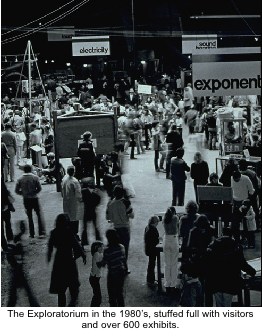| IMMEDIATE PROGRAMS The design and building of elegant, clear and reasonably public-proof experiments and exhibits will proceed slowly. It might easily take many years to complete the type of displays for the program outlined above. There are, however, some programs which could be initiated within a short time and which should be continuing features of the museum. These are outlined below. 1) School science fairs have become established institutions. At present, however, the projects are displayed for only two or three days and are then dismantled or returned to some storage place. They could well be displayed for much longer periods and the students who have built them could occasionally be on hand to explain them to the public. In the future, the talent and effort involved in these projects might well be marshalled to make more integrated displays for the museum. 2) The apparatus used in educational television science programs could be displayed in the museum after the television program had been shown. With competent supervision, this apparatus could be demonstrated again, and in at least some cases, the public might be able to work with it. In time, a television studio could be incorporated into the museum and a symbiotic relation between the museum and educational television could be developed. 3) There is a need for a central location in which to display the laboratory apparatus which has been developed for use in schools and colleges. This apparatus could be displayed in such a fashion that teachers and their pupils could work with it. Support for this activity might come both from the manufacturers of this apparatus and from the National Science Foundation which have invested heavily in its development. 4) There are many objects of industry and science which are themselves quite beautiful even when displayed with no pedagogical motive. The art department at Stanford | University recently put together, an exhibit using instrumentation for the Stanford Linear accelerator. Such exhibits would be worth displaying and would fit quite naturally with a practice of having displays of sculpture in the gardens and buildings which are adjacent to the museum building. A museum should not be a substitute for a school or a classroom but it should be a place where people come both to teach and to learn. Visitors should be able to find it refreshing and stimulating. Above all it should be honest and thus convey the understanding that science and technology have a role which is deeply rooted in human values and aspirations. | ||
 | |||